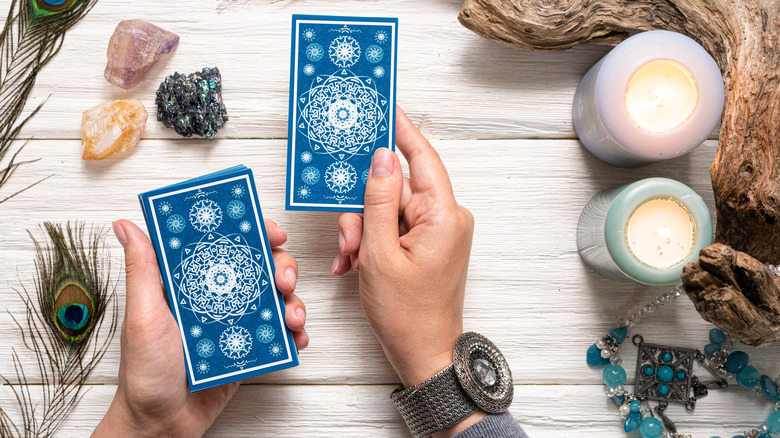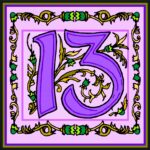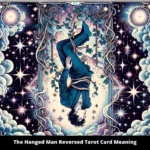The Devil card, often cloaked in layers of mystique and foreboding, emerges as a powerful archetype within the tarot deck. Commonly misinterpreted as an omen of doom, this card jolts its beholder with a profound message that transcends surface-level associations. With its deep symbolism and rich historical context, the Devil card invites individuals to examine their inner worlds, often promising a shift in perspective that can lead to personal enlightenment.
At first glance, the imagery of the Devil card can be downright startling. Typically portrayed as a horned, goat-like figure, it evokes notions of temptation, sin, and indulgence. The card often features a pair of figures—often a man and a woman—ensnared in chains, symbolizing bondage or enslavement to one’s desires. However, the true essence of the Devil card extends far beyond its provocative façade. It challenges the individual to confront what lies beneath the veneer of their subconscious fears and unfulfilled longings.
One of the most captivating aspects of the Devil card is its duality. It serves as a reflection of the darker aspects of human nature, portraying the shadows we often shy away from. Yet, this duality also emphasizes the power of choice. The figures depicted in the card, shackled yet standing upright, represent the idea that one holds power over their own fate. The chains, while seemingly confining, can also be interpreted as self-imposed limitations. Understanding this juxtaposition leads to the realization that liberation is often found through self-acceptance and acknowledgment of one’s flaws.
Diving deeper into its symbolic significance, the Devil card elucidates themes of materialism and excess. In a society where consumerism often reigns supreme, the card provokes contemplation of what it means to be truly ‘wealthy’. Is it the accumulation of possessions, or is wealth a state of mind? The Devil encourages individuals to question their pursuits—are they driven by passion or possession? This inquiry can result in radical transformation, prompting a re-evaluation of priorities and desires.
Moreover, the card acts as a stark reminder of the allure of escapism. In moments of distress, individuals may seek refuge in vices, whether it be through substance abuse, unhealthy relationships, or any form of detrimental behavior. The Devil card brings to light the importance of acknowledging these coping mechanisms, urging individuals to confront their shadows rather than retreat into them. This confrontation is often the initial step toward healing. The path illuminated by the Devil card invites you to face your fears, embrace vulnerability, and disentangle yourself from self-destructive patterns.
The essence of the Devil card is not confined solely to negativity or doom. In fact, it can herald the exhilarating prospect of transformation. By shedding light on dependencies and maladaptive behaviors, individuals are empowered to forge a new narrative—a narrative characterized by self-mastery and resilience. This transformation is not instantaneous; it requires courageous introspection and a willingness to embark on a journey of self-discovery.
Another significant aspect tied to the Devil card is its connection with sexuality and desire. It provokes contemplation about the nature of true intimacy, challenging preconceived notions surrounding sensuality. Instead of viewing sexual expression as sinful, the card encourages the celebration of desire as a fundamental aspect of the human experience. The Devil card implores individuals to embrace their passions unapologetically, liberating them from societal constraints that often lead to guilt or shame.
So, how does one navigate the often-turbulent waters of the Devil card? The journey begins with self-reflection. Journaling can serve as a powerful tool to dissect personal motivations and wrestle with lingering doubts. Engaging in open dialogues with trusted individuals can also provide clarity and foster understanding. Additionally, regular meditation can create a sacred space for internal exploration, allowing individuals to confront fear and desire with compassion.
In readings, the appearance of the Devil card can indicate a need to release yourself from whatever binds you—be it unhealthy relationships, toxic environments, or addictions. It serves as a potent reminder that while the path may be marred with temptation, empowerment lies in your hands. It encourages the recognition that the chains of bondage are often a product of one’s mind rather than external circumstances. This newfound perspective can initiate profound change, igniting a desire to reclaim one’s life and choices.
Ultimately, the Devil card in tarot is a multifaceted symbolism that can herald a profound introspective journey. It challenges individuals to confront their fears, embrace their desires, and liberate themselves from that which confines them. The card whispers a reminder: to understand one’s shadows is to step into the light of self-actualization. In doing so, the Devil card solidifies its role not merely as a looming figure of dread, but as a catalyst for transformation and enlightenment. What lay ahead when you embrace your truth? Boundless possibilities await for those willing to embark on this uncharted terrain.









Leave a Comment